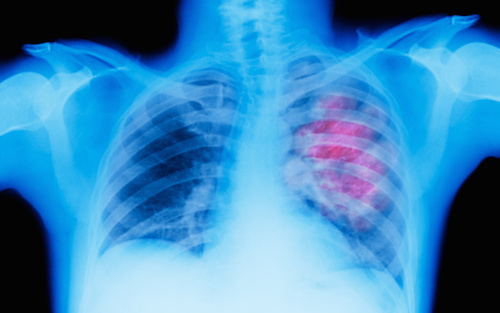
Lung cancer screening (LCS) is a crucial tool in the early detection and treatment of lung cancer. However, according to a new study in the Annals of Internal Medicine, current eligibility criteria may be excluding many individuals who could benefit most from screening. The study proposes a new set of criteria that could identify high-risk individuals more effectively, potentially reducing lung cancer mortality and addressing racial disparities in healthcare.
The U.S. Preventive Services Task Force (USPSTF) currently recommends lung cancer screening for adults aged 50 to 80 years with a history of smoking 20 pack-years or more and who currently smoke or have quit within the last 15 years. While these criteria have been instrumental in guiding screening efforts, they are not without limitations. Many individuals who smoked for a long time at lower intensities, those who quit smoking over 15 years ago, and racial and ethnic minorities are disproportionately excluded from LCS, even though they may still be at high risk for lung cancer.
The research team used data from over 58 million smoking adults, collected through the National Health Interview Survey (NHIS) from 1997 to 2018, to explore alternative criteria. Their goal was to develop a set of simple yet effective screening criteria that could more accurately identify high-benefit individuals than the current USPSTF guidelines.
“We discovered that using the same information that’s already considered for the USPSTF criteria, we can make adjustments to make more sensitive and specific criteria to identify high-benefit people, to improve the number of lung cancer deaths you’re projected to prevent, and also to bring in these specific groups of people that don’t meet the current criteria, but would still be very high benefit for lung cancer screening,” explains first author Lauren Kearney, MD, of Boston Medical Center.
The new criteria
The team employed fast and frugal tree algorithms, a method designed to create simple decision rules based on available data. “Our gold standard measurement was not actually lung cancer diagnoses,” Kearney explains. “It is the projected life gain from lung cancer screening, so basically subtracting the estimated life expectancy in the absence of screening. Life-years gained from LCS was estimated using the life-years gained from screening computed tomography. High-benefit was defined as gaining an average of at least 16.2 days of life from three annual screenings, which reflects high lung cancer risk and substantial life gains if lung cancer is detected by screening.
They identified two key groups that should be considered for lung cancer screening:
- Individuals who smoked for 40 years or more, regardless of intensity: The study found that duration of smoking is a stronger predictor of lung cancer risk than the intensity of smoking. This means that people who have smoked for many years, even if at a lower intensity, could be at a high risk of lung cancer and could benefit from screening.
- People aged 60 to 80 years with at least 40 pack-years of smoking history: This group includes individuals who may have quit smoking more than 15 years ago. Current USPSTF criteria exclude these former smokers, but the new study suggests that their risk of lung cancer remains significant, particularly as they age.
These new criteria were compared to the existing USPSTF guidelines and showed higher sensitivity (91% vs. 78%) and specificity (86% vs. 84%) in identifying high-benefit individuals. Notably, the new criteria were more effective in identifying high-risk individuals from racial and ethnic minority groups, with sensitivity gains observed across Black, Hispanic, and Asian populations.
Addressing racial disparities
One of the most compelling findings from the study was the potential to reduce racial disparities in LCS eligibility. The current USPSTF criteria have lower sensitivity for identifying high-benefit Black individuals (56%) compared to the new criteria, which showed an 83% sensitivity for the same group. This is significant because Black populations are often at higher risk for lung cancer due to a combination of factors, including socioeconomic status, access to healthcare, and smoking behaviors. Similarly, the new criteria was 95% sensitive for Hispanic individuals compared with 73% for USPSTF and 94% vs. 68% for an Asian population.
By refining the criteria, the hope is to bring more people at high risk into the screening process, thereby improving outcomes and reducing mortality rates across diverse populations.
Beyond lung cancer screening
The methodology used in this study could have broader applications beyond LCS. The simplicity and effectiveness of the fast and frugal tree algorithms could be applied to other cancer screenings and prevention strategies, potentially improving early detection and treatment outcomes in various populations.
“The study underscores the importance of continuously evaluating and refining screening criteria to ensure they are inclusive and effective,” says Kearney. “The objective is not to replace existing guidelines but to enhance them by ensuring that those who stand to gain the most from screening are not overlooked.”





